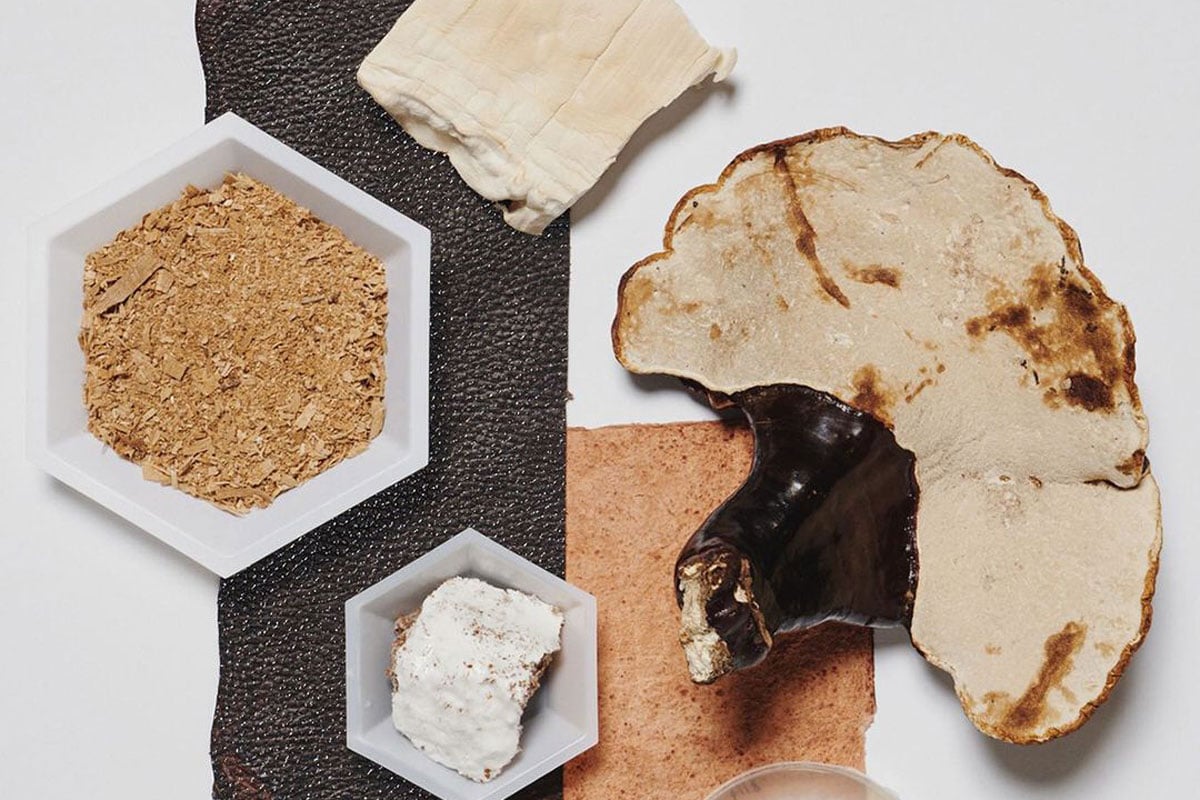
As far as materials are concerned, leather is undisputedly one of the most durable and versatile natural materials on the market. More than seven millennia since its inception, it has become a mainstay across a range of industries, from fashion to upholstery. As the world shifts towards a more sustainable future, the fashion industry in particular is beginning to turn to more innovative and considered solutions. Enter Mylo – the renewable, mushroom leather alternative you're about to see everywhere in 2021.
If like us, you're constantly on the hunt for new and sustainable textiles to adopt into your wardrobe, we encourage you to become well acquainted with fashion's favourite fungus. Below, we break down everything you need to know about Mylo; or simply, mushroom leather.
What is Mylo aka mushroom leather?
Mylo is a leather-like material created from mycelium – an ecological connective tissue that at the heart, is found within fungi. The infinitely renewable source is found sprawling within soil, through plant bodies, and along river beds to break down organic matter and provide nutrients to plants and trees.
The process from forest floor to mushroom-leather good is a complex one – which begins with extracting mycelium cells and replicating the growth process within a temperature and humidity-controlled bed of organic and renewable matter. From here, the cells grow to form a large, foamy 3D layer, which is then harvested; with any leftover byproducts used as compost. The final stage involves the sheet of cells being processed and dyed to form the leather replacement.
Who created Mylo?
Mylo was created by bioengineering company, Bolt Threads, a Californian-based company with the mission to “develop better materials for a better world.” Bolt Threads first debuted the sustainably-produced textile to the world in 2018, and currently continues to produce Mylo in indoor vertical farming facilities in both Europe and the United States.
View this post on Instagram
How is Mylo more sustainable than leather?
While it's still too early to understand the carbon footprint of Mylo, unlike animal derived leather, its production doesn’t involve raising livestock or emitting any of the associated greenhouse gases or material wastes. The mycelia that is used can be produced within days and eliminates the resource intensity of raising livestock, which can be a several year long process.
Which brands are part of the Mylo Consortium?
Confirming that Mylo holds the key to the future of sustainable leather in the fashion industry, several of your favourite designers and brands have jumped on board as part of Bolt Threads' Mylo Consortium. A leader in environmental awareness, you may not be surprised to learn that British designer Stella McCartney is pioneering the up-and-coming textile, with lululemon, Adidas and Kering – the parent company of Gucci, Alexander McQueen, and Balenciaga – also championing Mylo.
Although we will have to wait till 2021 to purchase products made from Mylo from the brands mentioned above, this won't be the first time Mylo enters the market since its inception. In 2018, McCartney took the renewable material for a test drive, partnering with Bolt Threads to produce her iconic Falabella bag in Mylo.
Image: Instagram



